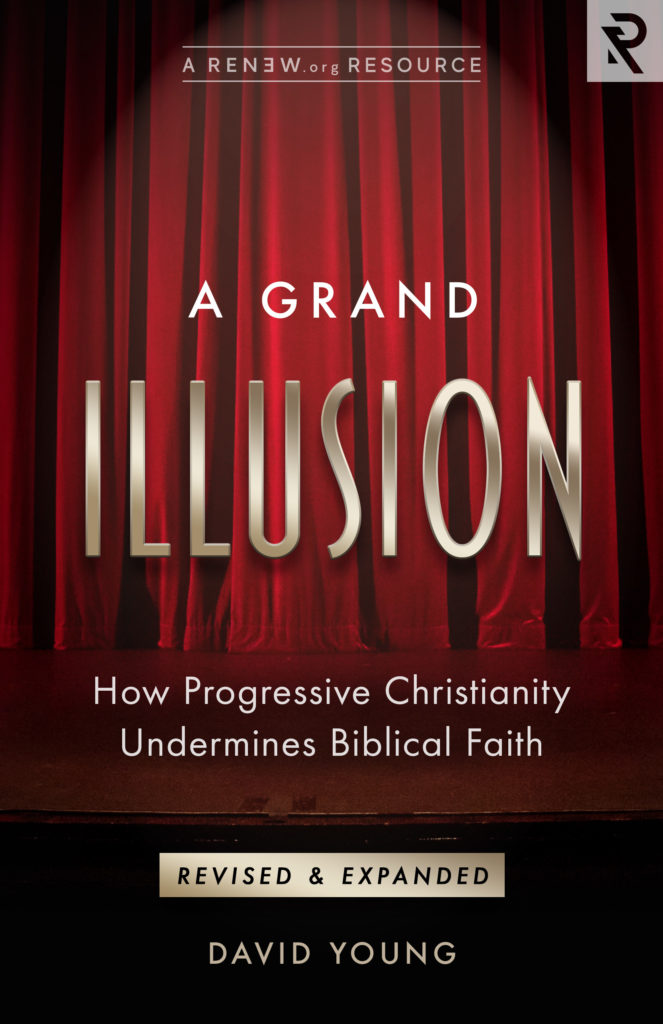
Bridge the Gap
As I sit down to write this, it is my aim to do so humbly, not as one claiming to be an expert. It is my hope that you see me simply as one attempting to wrestle with the question of how best to communicate the message of God to a people who desperately need to hear it–who often don’t recognize this truth about themselves.
I write as both an observer of, and a participant in the practice of preaching. I am blessed to preach the majority of the year’s Sundays to a church of wonderful people, many of whom are truly hungry for what the Word of God has for them. I count this one of the greatest honors of my life. Each time I preach, I hope to faithfully answer the call to speak, “as one who speaks the very words of God (1 Peter 4:11, NIV).”
I want to state at the onset that I believe the Bible is the Word of God, recounting events that took place over a period of thousands of years, and written by the hands of men through whom the Holy Spirit chose to communicate.
I believe God Himself has been active in preserving throughout the centuries the words we read today. I believe as well that the message of the working of God throughout history is as relevant to people in the twenty-first century as it was to those who were a part of the original audiences.
Even as I write these words however, I feel a tension I’m guessing many of you feel as well.
Here’s how I would characterize it: We know the message of Scripture is powerful. We know the gospel changes lives. We believe wholeheartedly that His words are still relevant but . . . we also feel an ever-widening gap we are trying to span as we step into our pulpits (OK, I don’t have a pulpit anymore, and I’m sure many of you don’t either, but you get the picture).
As we stand on our side of the chasm, we observe from afar a world that is changing more rapidly than we could ever have imagined.
The complexities of the internet age have left us feeling overwhelmed and confused. Our desire to reach the people who stand across the divide compels us to do something, but what? We hear statements shouted loudly from the occupants who stand on the other side. They say things like, “the Church just isn’t relevant to me anymore.” Or, “I have no room in my life for outdated superstitions.”
We look at our churches and we wonder . . . could they be right? Is the Church still relevant? Does the message of Jesus still matter? What about the Bible as a whole? Yes, we conclude. Jesus’ message does still matter, but how can we convince those who stand across the divide? The gap is just too wide.
Knowing we aren’t likely to see culture move in our direction, we find another way to shrink the gap.
Maybe, if we could simply compromise on a few of the issues that have caused so many to turn their back on the Church, we think, then they would see that the Church is, in fact, still relevant. What could that hurt? We will still have Jesus, after all. We’ve simply made a few allowances, hoping that this will remove some of the stigmas associated with the Church and the message of the Bible.
Maybe, we decide, it would be alright for followers of Jesus to test the waters of sexuality a little before getting married. Possibly, we think, if Jesus had stepped on the scene in the 21st century as opposed to the 1st, he would have had a different take on the myriad issues surrounding gender. And . . . God wouldn’t ask two people to stay in a miserable marriage, because, of course, He really does want you to be happy. Maybe, we have been too dogmatic. Yes, that must be it! We need a fresh reading of the Bible–one that is a bit more appealing to the culture of the day. I suppose we could go that direction. Many are.
The choice to narrow the gap can certainly look appealing. Every week as I work to prepare for the message I’ll deliver, I battle this tension within me.
What would happen if I chose to give a little where the message of God and the messages of culture collide? There are relatively few who would complain too loudly. Some would lament, to be sure, another preacher gone soft. Others, however, would welcome a little Biblical flexibility. The truth is that narrowing the gap isn’t all that difficult. It often begins with a phrase like, “Yes, the Bible says that, but what the author really meant was . . .” And in the blink of an eye, we believe we are once again relevant to those who stand across the chasm.
But what if there was another option?
One in which we didn’t choose to mold the Word of God to make it more palatable to the culture around us. Yes, it would require more work, hard work. It could mean making a change in the way we currently do things. What might that option look like, you ask? Here’s my contention: there’s more than one way to reach the other side of a proverbial chasm.
What if instead of narrowing the gap, we chose to bridge it? What might that look like?
It’s amazing to me that we often assume Jesus didn’t face some of the same difficulties we do as he spoke with the crowds who followed him. Jesus had plenty to say about greed and materialism. Jesus didn’t hesitate to address the issue of divorce. Jesus raised the bar when it came to lust and adultery, murder, and the imperative to speak honestly to one another. Do you see that? Jesus didn’t narrow the gap–at first glance it might even seem he widened it at times.
Jesus, it seems, was quite aware of the disconnect that existed between the message he was preaching and the worldview of those he was speaking to. That being said, I can’t find one instance in which Jesus compromised and chose to narrow the gap. No, he had something else in mind.
As I read the Gospels, I see that Jesus fed large crowds, healed the sick, ministered to the broken, lived as one who had no home, and eventually laid down his life for those he’d asked to follow him. Jesus chose to engage as a relationship builder. The relationships he built with those who followed him served as a bridge for the message he had to share.
Jesus also knew that he couldn’t rely solely on the “big stage” to push forward his Kingdom agenda. In fact, his choice to invest in 12 disciples over the course of three years shows us that he leaned into opportunities, often found only in smaller settings, in a significant way. Let’s not forget that it was this small band of deeply committed followers who set out on the mission to take the good news to the ends of the earth during the decades following his ascension.
If Jesus had centered his best efforts on the “big stage alone” approach, I wonder if any of his followers would have entertained the idea of going to the ends of the earth.
Jesus also worked hard to show his audience why the message he preached had relevance in their lives. Jesus didn’t dismiss honest questions–even the dishonest ones he often answered. When he answered, he did so gently, often telling a story that would have captured the imagination of his listeners before he made his point. In this, Jesus was a master communicator.
We should pay careful attention to his unwavering devotion to his Father’s message. We should also learn from his style as one who spoke truth in such creative and convincing ways that the minds of his listeners were opened to another possibility.
Here’s my plea to those who share my passion and my vocation. Don’t narrow the gap; bridge it. We are currently witnessing in great scale what eventually happens to many of those who decide that narrowing the gap is the best route. As we declare, “Yes, the Bible says that, but what the author really meant was…,” we embrace not a theology or orthopraxy of God’s creation, but one that reflects our wishes and whims instead. We may be embracing popular thought, but popular thought is always “progressing.”
How far will we follow it? When pursued to its end, the reality is we can make the Bible say just about anything we would like it to.
As a friend of mine says, this liberal approach to theology is never an on-ramp to faith. It’s always an off-ramp. Who needs the Bible once we’ve decided that it is simply a book full of suggestions or words that applied to another place and time, but not to us.
For myself, however, I have decided to follow Jesus’ example.
I don’t want to narrow the gap; I want to bridge it. In my mind here is what I envision: I see a bridge with one side firmly anchored to what is eternal and never changing. The other end is connected to what is perpetually shifting. It will not be easy work to make the adjustments necessary to keep this second end of the bridge connected, but it will be worth it.
I will say it again: I believe the words of Scripture are powerful.
I believe the Gospel changes lives. I believe wholeheartedly that the message of God will continue to be relevant to those we are trying to connect with. Let’s not give up on bridging the gap. Continue speaking the Words of God!
Some practical applications:
- Take time to invest in building relationships, and not only with fellow Christ-followers, but with unbelievers as well. Use those relationships as a bridge for the Gospel. Many are calling this approach “relational discipleship.” Think of the way Jesus invested intensely in a group of 12, and even more deeply in a group of 3. His example should be our model.
- When you preach, don’t just dive into your message, but make an effort to build a relational connection. It helps if it is evident that you are human too. I will often dedicate several hours to crafting the first five minutes of a message.
- As you prepare messages, consider those who are skeptical and try to imagine how they might receive your words. Acknowledge skepticism when and where it may exist in connection with the message you are presenting.
- The words of Scripture often clash with the values of culture. Many secular studies, however, confirm the wisdom of living just as God would have us do. Lean in to opportunities provided by these secular studies that unintentionally confirm the truths of God. For example, many studies show just how important the nuclear family is to the healthy development of children.
- Like Jesus did, tell stories. Stories exist as tools that often serve to soften the blow of difficult teachings, while still powerfully and uncompromisingly communicating those difficult teachings. As an added benefit, people tend to remember truths they learned in story form.








